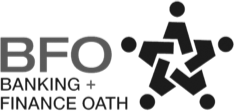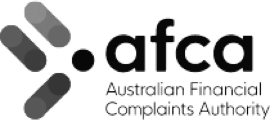Cash is the oxygen that enables a small business to survive and prosper, and is the primary indicator of business health. Good cash flow is essential for all businesses. It can sometimes seem daunting, but it needn’t be complicated. Our tips are designed to help you reduce your costs and keep your cash flow healthy. By Andrew Colliver, CEO, Banjo
1. Keep your finger on the pulse of the business
That’s easier said than done. Do you ever put your book-keeping to one side because you’re so busy ‘running’ the business? It’s understandable, and in fact quite common, but if the books aren’t organised, trouble lurks around the corner and your business has cashflow problems before you know it.
The best way to get the books in order is to use a transparent cloud based accounting system like Xero or MYOB (which reconcile with your bank account) and to make sure that it is kept up to date. Once your accounts are in order you’ll be able to stay on top of what funds are available immediately and what’s still in your clients’ bank account waiting to be transferred.
With this level of understanding you’ll have a clearer picture of what funds need to be accelerated by using a funding platform such as Banjo Loans, so you can stay on top of your cash flow but also meet your growth ambitions.

2. Show me the money
Bad debts are funds owed by customers that cannot be recovered. They are a real nemesis of every business and can easily occur if a proper credit control system is not put in place early on.
- Stay on top of your debtor book. Send out invoices promptly and be quick to chase overdue bills. Get to know your customer payment dates and don’t ignore irregularities or delays.
- Develop an action plan for overdue invoices. Try to understand your customer’s situation and carefully balance the need to receive payment against your relationship with your customer.
- It is important to conduct credit checks on your customers before offering credit terms. If your client has a poor credit record you can always ask for a deposit up front or issue partial invoices so they pay on a per milestone basis.
3. Shorten your Cash Conversion Cycle
Cash generated by the business is the cheapest form of capital. Generally, the shorter the cycle, the less time capital is tied up in the business process, and thus the better for the company’s bottom line.
That’s probably the toughest of your financial challenges. If your clients’ credit terms are out of sync with the credit terms of your suppliers, negative cash flow can build up pretty quickly.
There are different strategies that can be applied:
- You can try to re-negotiate terms with your customers/suppliers. However, this may have a negative effect on the relationship you worked so hard to build. Also, it’s something that cannot be solved right away as it requires engaging in the lengthy process of redrafting of the existing agreements
- You can offer early settlement discounts on your invoices. This would give your clients a financial incentive to pay you early. This typically means around 4-5% reduction in the total invoice value; if your profit margins are low it may not be the best solution for you.
- Give your customers a variety of simple payment methods to make it easy for them to pay on time. Offering a choice of payment options, such as EFTPOS, BPAY®, over the phone or online, will help you get paid faster.
- Avoid laying out a lot of cash for unnecessary quantities of stock and cull out the sludge (Sludge is the merchandise that just sits there, on the bottom, doing nothing).
- Factoring – this is where a financial institution such as bank or a private fund will lend your business cash that is secured against the value of the invoices you have issued. This can often be a risky route and once you decide to factor your invoices it may be extremely hard to leave the facility later down the line. Factoring, also called invoice discounting, will tie you up to a long contract. The providers will also demand personal guarantees and debenture over your company’s assets. Furthermore, they will generally want you to put the whole debtor book through them and this can be very costly.
4. Be growth-ready
Growth is what every business aims for. However, without the right strategy and tools, rapid growth can cause cash flow problems and hurt the business. Again, there are various scenarios you could implement.
- Cash flow forecasting enables you to predict peaks and troughs in your cash balance, particularly if you have a seasonal business or plans for rapid growth. It helps you to plan borrowing or tells you how much surplus cash you’re likely to have at a given time. Xero and MYOB offer user friendly cash flow forecasting tools.
- Stay on good terms with your bank or other lenders in case you need to extend credit levels or apply for finance. You could access a line of credit from the bank such as an overdraft or a loan. The costs of capital may be high, especially if you’re a young business with mostly human capital and not much in terms of tangible assets that banks like to use as a security for loans such as real estate or machinery. It will also take many weeks, if not months to get in place. Consider all funding options including hire purchase, leasing, loans and invoice discounting from alternative financiers.
- Consider a marketplace lender such as Banjo to provide an easy, convenient and flexible way to access ongoing finance
- Have a warning system in place so if you are heading towards the red, you know as soon as possible.
Businesses often face more than one of the above cash flow problems. Paying close attention to your company’s finances and having the right solutions ready to be deployed whenever required will ensure that you make it through the first five ‘survival years’ and become a success story of tomorrow.
At Banjo, we’re inspired by your stories, how do you keep your cashflow in check? What challenges have you faced on the road to growth? . Tell us about your Just Brilliant business! We’d love to hear from you on the below email link.


